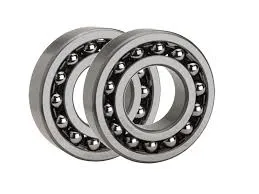
Dec . 04, 2024 13:28 Back to list
Single Row Deep Groove Ball Bearings Product Guide and Specifications
Single Row Deep Groove Ball Bearing An Overview
Single row deep groove ball bearings are one of the most commonly used types of rolling bearings. Their design and functionality make them versatile components in a wide range of applications, from automotive to industrial machinery. This article will explore the characteristics, advantages, and applications of single row deep groove ball bearings, providing insights into their significant role in modern engineering.
Design and Features
Single row deep groove ball bearings consist of an inner ring, an outer ring, a cage, and rolling elements (balls) that are placed between the inner and outer rings. The deep groove design allows the bearing to accommodate both radial and axial loads, making it suitable for a variety of applications. The raceway geometry is crafted to offer smooth motion and minimal friction, thereby enhancing the efficiency of the machinery it supports.
The key dimensions of these bearings include the outer diameter, inner diameter, and width, which are standardized by organizations such as ISO and ANSI. This standardization ensures that bearings can be easily replaced or sourced, making maintenance simpler for engineers and technicians.
Advantages of Single Row Deep Groove Ball Bearings
1. Versatility One of the main advantages of single row deep groove ball bearings is their adaptability. They can handle not only radial loads but also some axial loads in both directions, making them incredibly useful in numerous applications.
2. High-Speed Performance Due to their design, these bearings can support high-speed operations. The smooth surface finish and optimized internal geometry reduce friction, which allows for higher rotational speeds and improved efficiency in machinery.
3. Durability and Longevity Constructed from high-quality materials, such as chrome steel or ceramic, single row deep groove ball bearings exhibit excellent wear resistance. The right choice of lubricants also plays a crucial role in extending bearing life, as proper lubrication minimizes friction and prevents overheating.
4. Ease of Installation They are straightforward to install, and their standardized sizes allow for quick and easy replacements. This reduces downtime in operations, which is crucial for industries reliant on continuous production.
single row deep groove ball bearing catalogue

5. Cost-Effectiveness Given their widespread use and standardized sizes, single row deep groove ball bearings are generally more affordable compared to specialized bearings. Their long service life and reduced maintenance needs also contribute to lower operational costs.
Applications
Single row deep groove ball bearings find applications across various industries
- Automotive They are used in wheel hubs, gearboxes, and electric motors, providing reliable performance in essential automotive components. - Industrial Equipment In manufacturing settings, they are used in conveyor belts, compressors, and pumps, where they can handle variable loads and high speeds.
- Household Appliances Commonly found in washing machines, refrigerators, and other appliances, they contribute to efficient operation and durability.
- Electronics In motors and fans, these bearings facilitate smooth movement and operational stability, which are vital in electronic devices.
- Aerospace Their lightweight and robust nature makes them suitable for use in various aerospace applications, where performance and reliability are non-negotiable.
Conclusion
Single row deep groove ball bearings are an indispensable component in various machines and devices, owing to their versatile design, high-speed capabilities, and robust performance characteristics. As industries continue to evolve and demand higher efficiencies and lower maintenance costs, the role of these bearings will only grow more important. Their adaptability to different loads, combined with their ease of installation and cost-effectiveness, makes them a preferred choice for engineers and manufacturers alike.
In summary, whether in automotive, industrial, or domestic contexts, single row deep groove ball bearings are crucial for ensuring the seamless operation and longevity of machinery. Their ongoing development and integration into newer technologies highlight their significance in the ever-evolving landscape of engineering and manufacturing.
Latest news
-
Spherical Roller Bearings Applications: Heavy Duty, Self-Aligning
NewsAug.30,2025
-
Premium Deep Groove Ball Bearings | High Speed & Reliability
NewsAug.29,2025
-
Durable Scaffolding Clamps - Secure & Reliable Tube Connectors
NewsAug.28,2025
-
Common Failures in Thrust Ball Bearings and Solutions
NewsAug.22,2025
-
How Tapered Roller Bearings Can Take Shock Loads
NewsAug.22,2025
-
Angular Bearings in High-Precision Spindles
NewsAug.22,2025
